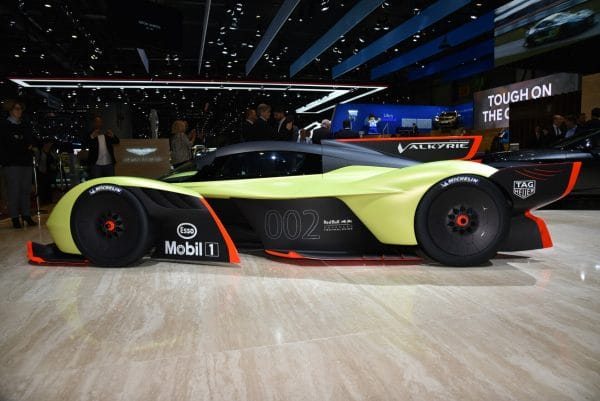 The article is about Aston Martin’s Valkyrie, which is essentially an F1 car designed for the road. It was developed with the help of Red Bull’s F1 guru, Adrian Newey, and was first announced in 2016. However, it wasn’t driven until 2023, making it the longest gestation of any car the author is aware of. The development process was reportedly fraught, but the car has finally made it to production with most of its promised features intact.
The article is about Aston Martin’s Valkyrie, which is essentially an F1 car designed for the road. It was developed with the help of Red Bull’s F1 guru, Adrian Newey, and was first announced in 2016. However, it wasn’t driven until 2023, making it the longest gestation of any car the author is aware of. The development process was reportedly fraught, but the car has finally made it to production with most of its promised features intact.
One of the key features of the Valkyrie is its tiny teardrop carbon passenger cell, which is paired with a new 6.5-litre naturally aspirated 65-degree V12 engine. This engine is hard-mounted to the passenger cell, while an electric motor is integrated into the clever gearbox. The powertrain is a stressed member, with the suspension hanging off it to save weight and achieve a 1:1 power-to-weight ratio. However, the weight has since increased due to regulations, legislation, and rumored cost-cutting, which has impacted the power-to-weight ratio.
Despite this, the Valkyrie still boasts a combined output of 1160bhp from the V12 engine and electric motor One of the most impressive aspects of the car is its downforce, which comes in at a massive 1,000kg. This is achieved by using the under surfaces of the car more than the top sides, with venturi tunnels that are something to behold. The car seems to float above the road, with empty spaces perforating the bodywork, and it’s possible to see straight through it from some angles.
 The cockpit of the Valkyrie is race car tight, with a lightweight door that releases using a fingertip-sized button. Once inside, you’ll find that each minimalist carbon wafer seat is angled inwards at two degrees, with an upwards leg incline that feels natural almost immediately. The steering wheel doesn’t lift high enough, and an array of screens provides your rear view with average success. There’s a central divider to prevent the passenger from operating the pedals, and a central console that contains the parking brake switch, hazards, and a USB port. However, there’s nowhere to put your phone, except for a slot next to the crotch harness on the passenger seat.
The cockpit of the Valkyrie is race car tight, with a lightweight door that releases using a fingertip-sized button. Once inside, you’ll find that each minimalist carbon wafer seat is angled inwards at two degrees, with an upwards leg incline that feels natural almost immediately. The steering wheel doesn’t lift high enough, and an array of screens provides your rear view with average success. There’s a central divider to prevent the passenger from operating the pedals, and a central console that contains the parking brake switch, hazards, and a USB port. However, there’s nowhere to put your phone, except for a slot next to the crotch harness on the passenger seat.
Despite its impressive specs, the Valkyrie is not an easy car to drive on the road. There’s no clutch pedal to worry about, but the car’s refinement is absent, with a raucous and penetrating idle that makes it hard to focus on anything else. To counteract this, Aston Martin supplies the car with state-of-the-art headsets with an intercom. Even with these, the noise is deafening, making it difficult to communicate with other people in the car or outside of it.
In addition to the noise, there are other issues that make the Valkyrie a challenging car to drive. On the Michelin Cup 2s, it had little grip, and the brake pedal had an oddly long travel. The steering didn’t have much natural feel, and the gearbox was slow shifting. There were also considerable vibrations through the tub, which made it difficult to manage certain aspects of the car.
Overall, the Valkyrie is an impressive feat of engineering, but it’s not a car for the faint-hearted. It requires skill and experience to drive, and even then, it may not be for everyone. Nonetheless, it’s an exciting addition to the Aston Martin lineup and a true testament to the company’s engineering prowess.


